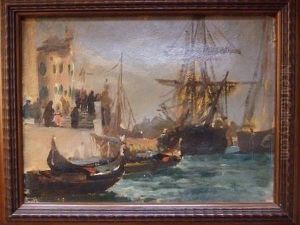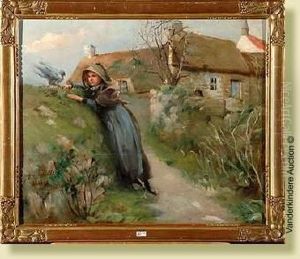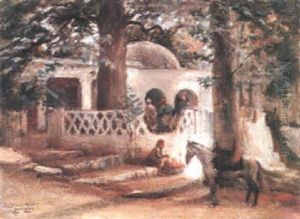Georges Landelle Paintings
Charles Georges Landelle was a French painter born on June 2, 1812, in Laval, Mayenne, France. He was known for his Orientalist and religious subjects, as well as for his portraits. Landelle was a product of the academic system of his time, studying under renowned artists such as Paul Delaroche, who was famous for his historically accurate and emotionally charged scenes.
Landelle made his debut at the Salon, the official art exhibition of the Académie des Beaux-Arts in Paris, in 1837. His career gained momentum when his painting 'The Christian Martyr' was well-received at the Salon of 1840. He continued to exhibit regularly, achieving success with both his religious themes and his Orientalist works, which were inspired by his travels to North Africa and the Middle East. These travels were particularly influential on his work, and he became known for his depictions of the people and landscapes he encountered, often imbuing them with a sense of romanticism.
Landelle was a prolific artist, and his popularity grew throughout the 19th century. He received numerous commissions for portraits from the bourgeoisie and the French aristocracy, and his work was also sought after by collectors. His style was characterized by meticulous detail, soft colors, and a certain idealization of his subjects, which was in keeping with the academic standards of the time.
Despite his success, Landelle's work fell out of favor with the advent of Impressionism and the movement away from academic art that characterized the late 19th and early 20th centuries. Over time, his name and contributions were somewhat overshadowed by the more revolutionary artists of his era.
Charles Georges Landelle died on October 13, 1908, in Chennevières-sur-Marne. Although his work is not as widely known today as some of his contemporaries, it can still be found in museums and private collections, and he is recognized for his contributions to 19th-century French art, especially in the Orientalist genre.


